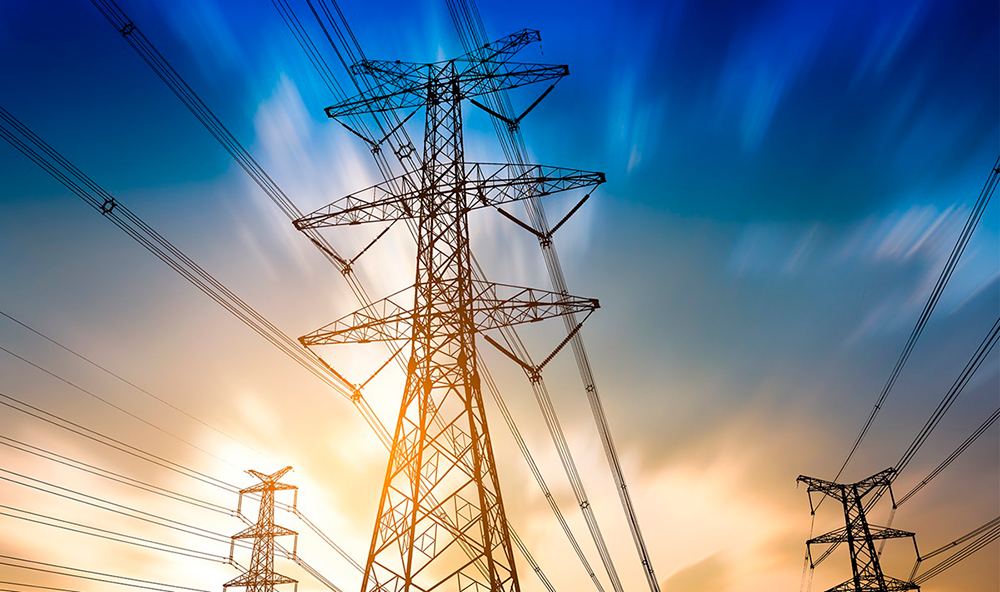Light up a room. Charge a phone. Refrigerate the milk. The electrical grid that allows us to have all of this at our fingertips is considered a critical piece of North American infrastructure. But it was conceived in the time of Edison - how does it hold up to today's power needs?
The short answer? Not very well, and one reason for that comes down to a pair of commonly used (but not necessarily well understood) abbreviations: AC and DC.
The very first power systems were DC, or direct current. DC moves like a steady stream of water from a hose but is only good for very short distances. In the 1880s, power companies adopted the idea of AC technology. Alternating current, or AC, is an electric current that reverses direction at fixed intervals - in North America, it switches 60 times every second, known as a frequency of 60 hertz.
It all sounds very technical but the reasoning was purely pragmatic: AC could be delivered to users who were many, many miles away with low transmission losses, so that meant building few power plants. The system that developed at that time is the one still used today: centralized generating plants creating 60-hertz AC electricity, transformers to step up its voltage before high-voltage transmission and step it back down before it enters your home, and thousands of kilometres of AC-friendly transmission and distribution lines.
But the AC grid of yesteryear isn't keeping up with DC demands of today. Renewable energy sources produce DC power. LED lights and consumer electronics need DC power. The power system always leaked like a sieve, but every time electricity is converted between AC and DC, it wastes a little bit more.
"There's a huge amount of power generated each day around the world and lots of energy consumption. If you're able to save just one per cent of these losses in the system, that's a huge amount," says engineering professor Yunwei (Ryan) Li, who leads a team of researchers and grad students studying technologies to improve the grid.
That buzzing you sometimes hear near transmission lines? That's a sign of energy being lost. So is the heat you feel in those ubiquitous converter boxes used in charging your phone or laptop. Reduce the number of conversions (remember that in some cases it must convert from DC to AC and back to DC again before it reaches your devices) and you improve efficiency, says Li. "Eventually it makes sense that [we] have DC-based energy storage, DC-based power generation, then you may just have DC grids. So that structure of the grids will probably need to change."
Part of the answer lies in something called a smart grid - a seemingly all-purpose term but what is really just the gradual morphing of the existing grid into something that connects more seamlessly with digital technology and renewable energy sources.
The term smart grid covers a number of concepts. One is the notion of two-way electricity flow - for example, instead of the grid simply being a one-way electricity delivery system, it would also accept surplus power generated by solar panels on your roof. A smart grid could be something that responds automatically to an outage in west Edmonton by calling for power from the U of A micro-grid. A smart grid could predict an intense storm heading toward a wind farm and take it offline to prevent a damaging power surge. It could instruct your refrigerator to go into low-power mode to offset high demand. These are the types of scenarios researchers are investigating in several projects at the U of A - and while all have long-term ramifications, the ones that focus on reliability and efficiency are, in Li's opinion, paramount.
The integration of wind energy into the electrical grid is an example of an area that falls under both of those parameters, Li says. There are times when its power quality - that is, the electricity's voltage, frequency and waveform - doesn't match the grid's requirement for 60-hertz AC power.
"You have to store that energy somewhere because, otherwise, the voltage could go up or the frequency won't be 60 hertz anymore. And then you have problems with power quality or system stability," he says.
This includes an issue called tripping the load, which leads to power interruptions and blackouts.
One of Li's projects is to improve the supply of renewably sourced power. "You improve the power quality of the systems so that we ensure your load is always connected and running properly."
And returning to the AC/DC dilemma, storing energy sourced from wind and solar requires a battery and batteries produce DC. It brings us right back to the challenge of converting energy to send it to the grid.
All of this does not mean that transmission lines (26,000 kilometres in Alberta alone) will need to be replaced overnight with DC or hybrid AC/DC lines. The transition, he says, will be gradual.
Indeed, changes are already happening. In 2015, two DC transmission lines stretching for a total of 835 kilometres were completed between the Calgary and Edmonton areas at a combined cost of $3.5 billion.
Bit by bit, the grid is getting smarter and the process will continue for decades to come, says Li.

We at New Trail welcome your comments. Robust debate and criticism are encouraged, provided it is respectful. We reserve the right to reject comments, images or links that attack ethnicity, nationality, religion, gender or sexual orientation; that include offensive language, threats, spam; are fraudulent or defamatory; infringe on copyright or trademarks; and that just generally aren’t very nice. Discussion is monitored and violation of these guidelines will result in comments being disabled.